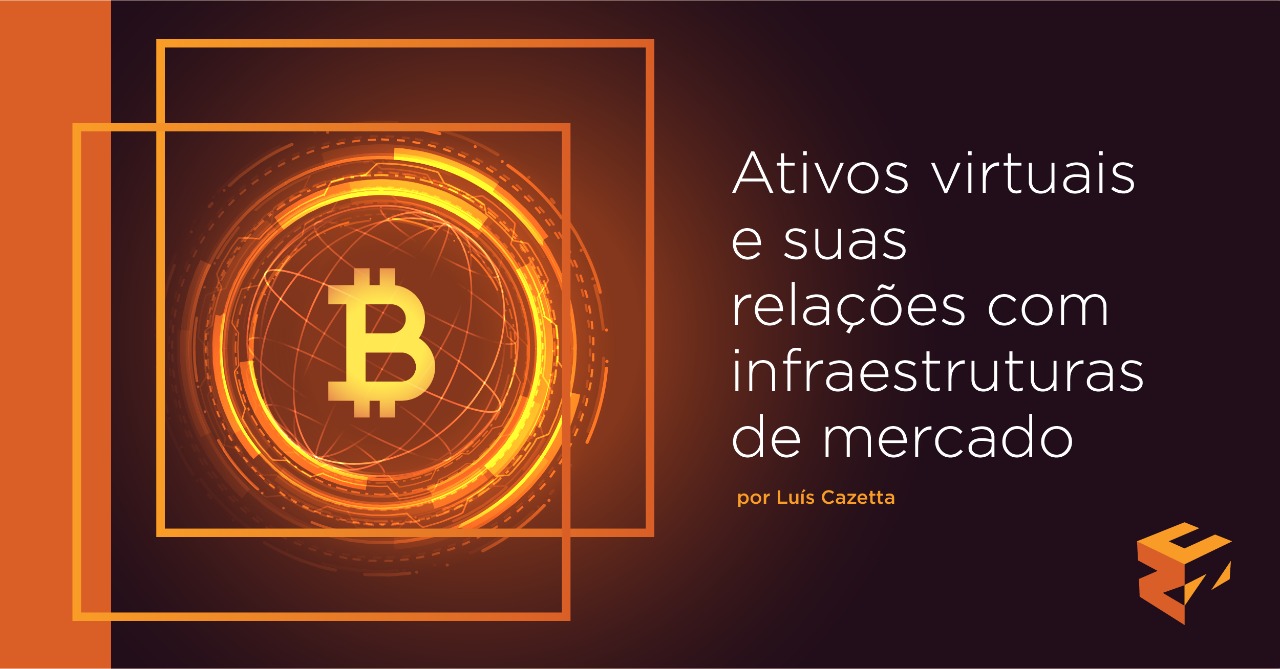A Bill of Law is pending at the Brazilian Congress aimed at providing for “the inclusion of virtual currencies and air mileage programs in the definition of ‘payment arrangements’ under the supervision of the Central Bank” (Bill No. 2,303, of 2015 ).
In justifying his bill, the proponent, Congressman Aureo Ribeiro, uses a 2012 report from the European Central Bank, to, in his words, address “three issues related to virtual currencies, one in each article: i) regulation by the Central Bank, ii) money laundering and other illegal activities and iii) consumer protection”.
The wording adopted in the bill and the purposes that would motivate it may justify here some considerations about the concepts of virtual assets (and currencies) and their possible relationships with market infrastructures.
The reason is simple. It is enough to remember that in the process of interpreting the norms, as Carlos Maximiliano[1] teaches, the applicator of the law “attributes to the words the meaning resulting from the vulgar language; because the lawgiver, or writer, is presumed to have used common expressions; however, when legal terms are used, it must be believed that there was a preference for technical language”. Therefore, “[it] is not enough to obtain the grammatical and etymological meaning; It is also important to check whether a given word was used in a general or special, broad or strict sense; if he does not sometimes present himself expressing a concept different from the usual one”.
this seems clear in PL disc The first observation that seems to fit, therefore, concerns the term “virtual currencies” used in the bill.
It is only an apparently technical and specific term, given that the adjective “virtual” does not adequately explain the nature and quality of the asset it qualifies. It just expresses the idea of something non-material or dematerialized. Something of digital, electronic, technological existence and control.
The concept of “virtual currencies” (used in a broad and non-technical sense) includes both cryptocurrencies and electronic currencies, the first ones lacking adequate regulation; the second already dealt with by the applicable regulation, in particular that of payment arrangements.
In very simple language, it can be said that “electronic currencies” correspond to the technological means by which it is possible to comply (extinguish), according to the proper procedures, payment obligations, without the delivery of physical currency to the creditor of the obligation.
This concept does not fit correctly with the “cryptocurrencies”, the genre to which assets called “bitcoins” belong, which are “virtual” (genre) assets created using a specific distributed registry technology (“DLT – distributed ledger technology”) and cryptographic nature.
In addition to the non-specificity that the adjective “virtual” confers on dematerialized assets (including currencies) and the inappropriateness of using the notions of “crypto actives” or “cryptocurrencies” for simply electronic assets, those not subject to the specific technology of the aforementioned distributed registry, there are a serious problem in the use of the word currency in the bill.
As is well known, although resources for electronic use or virtual assets can be used to terminate payment obligations (provided they are accepted in the regulation or accepted by the parties to a credit relationship), this fact does not transform them into “currencies”, in the strict meaning of the term, a concept that demands, in addition to the attributes of unit of account and store of value, to represent a means of forced course exchange in the economy in which it is applied.
This is why cryptocurrencies (actually crypto actives) cannot be considered strictly coins. What also happens, it is easy to see, with credits (points) in air mileage programs, as apparently contemplated in the proposed law.
It is only an apparently technical and specific term, given that the adjective “virtual” does not adequately explain the nature and quality of the asset it qualifies. It just expresses the idea of something non-material or dematerialized. Something of digital, electronic, technological existence and control.
The fact that book-entry assets (electronically controlled assets not subject to DLT processes) are not confused with crypto-assets has practical consequences for the organization and regulation of the financial system.
While the verification of existence, uniqueness, traceability, economic-accounting compatibility and regulatory adequacy is central to the security of transactions carried out in the market with merely book-entry assets (verification that operates by submitting them to regulated procedures under the responsibility of bookkeepers and/ or centralized deposit or registration entities), when it comes to crypto actives, the central concern is the possibility of verifying the legitimacy of the origin and the records entered therein, whether relating to payment events, whether concerning transfers of ownership or constitutions of warranty.
In other words, what matters for the former is the regular performance of bookkeeping, registration or centralized deposit activities in the context of interoperability; for the latter, effective governance and compliance controls of records and entries made in the asset’s representation mechanism.
This aspect expresses a fundamental characteristic of the economic-regulatory phenomenon caused by crypto actives.
Just as the dematerialization process changed the form of representation and transfer of assets, in particular bonds, the decentralized encryption and registration process of tangible or book-entry/electronic assets (so-called tokenization) tends to cause profound changes in mechanisms and operating regime of the set of agents that were conceived to give security to the original dematerialization process.
This is because the bookkeeping and event registration processes related to dematerialized assets (essential for the control of book-entry assets) seem to be inherent to the technology
applied to crypto actives, a technique that seems to solve, with advantage, the issue of interoperability (the asset, considered in itself , carries the information corresponding to your bookkeeping and registration).
Therefore, when it comes to crypto actives (assets submitted to DLT) it may not be necessary for the electronic systems of the bookkeeping agents, registration and centralized deposit of dematerialized assets to be interoperable (communicate), given the fact that the form of representation of the active object of control already brings the indicators of its uniqueness and traceability.
If so, it would be enough for the competent regulator to verify for each asset which requirements and controls would be necessary to confirm its regulatory adequacy and the legitimacy of the entries made therein, including for the purposes of combating money laundering and terrorist financing.
This aspect calls for one last comment.
It is not appropriate to confuse the regulation of crypto active creation and custody procedures as a representation mechanism of dematerialized assets (the technological documentation that gives existence and uniqueness to the asset) with the underlying asset, which retains its characteristics, and, with that, its subjection to the corresponding regulator (if it corresponds to a security, to CVM; if to financial assets, to the Central Bank of Brazil, etc.).
Therefore, it is one thing to regulate the performance of agents for the creation and control of assets submitted to the DLT (possible new market infrastructures); the other is meeting the requirements for them to exist and circulate.
None of this seems clear in the discussed PL, which is already ready for the agenda in the plenary of the Chamber of Deputies.
________________________________________
[1] Hermeneutics and application of law. Rio de Janeiro: Forenses, 2011, 20th Editions, p. 90.



